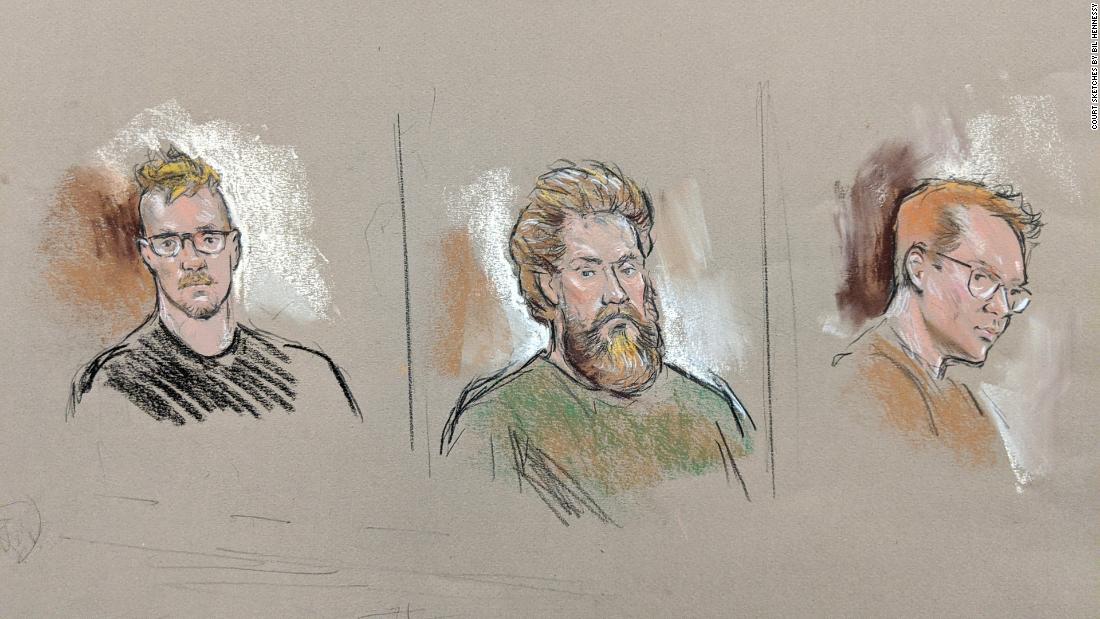These arrests add to mounting evidence that a decades-old and violent white-power movement is alive and well, perhaps even gaining strength.
White power is a social movement that has united neo-Nazis, Klansmen, skinheads, and militiamen around a shared fear of racial annihilation and cultural change.
Since 1983, when movement leaders declared war on the federal government,
members of such groups have worked together to bring about a race war.
The Justice Department says the three men arrested had ties to the violent white supremacist paramilitary group The Base and according to the New York Times one also had military-level explosives expertise, two carried an assault rifle they built themselves. All of these are strategies that call back across decades. Targeting MLK Day, in particular, is an old gambit — white power activists opposed the creation of the holiday and have used it for decades as a day to mobilize disaffected fellow travelers and provoke violent clashes.
But the events of this week also offer encouraging new developments. The silver lining is that Thursday’s arrests came before these alleged extremists could attend a rally where they or others with guns could commit a violent act.
While there are other examples of FBI agents intercepting these groups and individuals in time, I have
found in my research that they are relatively rare. That the men were apprehended by the FBI in concert with official action from the governor of Virginia to declare a state of emergency, thereby shutting down the attempt of militia groups to storm the Capitol, shows that authorities have learned from the horrific August 2017 violence in Charlottesville and are taking this movement’s deadly threat to democracy seriously.
Further, a judge acted expeditiously to turn back a challenge from rally organizers to Northam’s temporary ban on firearms, which the Virginia Supreme Court
upheld on Friday night. The white power movement has often capitalized on a lack of coordinated response from law enforcement, politicians, and courts, but this week, there is hope of all of these institutions working together to confront the threat.
Silver linings aside, it will take many, many more instances of coordinated response to stop a movement generations in the making. In more than a decade of studying the earlier white power movement, I have become familiar with the themes of underground activity that are today clearly drawing from the earlier movement. In the absence of decisive action across multiple institutions, a rich record of criminal activity and violence will continue to provide these activists with a playbook for further chaos.
Although some on social media have noted with surprise the presence of a Canadian citizen among those arrested, such transnational membership has
long characterized white power organizing. The Order, a white power terrorist group that robbed armored cars and carried out assassinations in the US in the 1980s,
had Canadian members, as did the major white US-based separatist organization Aryan Nations.
The homemade assault rifle authorities described may have been meant to circumvent gun regulations. In the 1980s, white-power activists made their own land mines and hand grenades and learned how to adapt semi- to fully-automatic weapons.
The Base, furthermore, is what experts call “
accelerationist,” meaning that its members hope to provoke what they see as an inevitable race war. They have conducted paramilitary training in the Pacific Northwest. Both of these strategies
date back to the 1980s, when the Order trained in those forests with hopes of provoking the same race war.
One of the men arrested Thursday was formerly a reservist in the Canadian Army, where he received training in explosives and demolition, according to the New York Times. This kind of preparation, too, is common among extremists like these. To take just a few representative examples, in the 1960s, Bobby Frank Cherry,
a former Marine trained in demolition, helped fellow members of the United Klans of America to bomb the 16th Street Birmingham Baptist Church, killing four black girls.
An Army and Green Beret veteran,
Frazier Glenn Miller, was in military service for 20 years before his dishonorable discharge. He then carried out a
campaign to militarize the white-power movement and conducted paramilitary training in the woods of North Carolina. He
declared war on the government, went underground and then reemerged in 2014, when, in Overland Park, Kansas, he shot and killed three people at a Jewish community center and an assisted living facility. In 2015, he was sentenced to death.
Gulf War veteran Timothy McVeigh, lauded as a hero by today’s paramilitary white-power groups, used his Army training to plan and carry out the
1995 Oklahoma City bombing as part of the white power and militia movements. The attack, the deadliest domestic terror, killed 168 people.
Let me be clear: It’s extremely unusual for veterans to break their oaths of induction by seeking to become domestic terrorists and therefore enemies of the very democracy they swore to protect. But those who do take that path have operationalized an entire groundswell — across decades — by sharing tactics, training, munitions expertise, and more with other white power activists.
And this movement doesn’t see violence as the end goal of activism — mass violence is instead meant to awaken others to join the cause.
Continued and deliberate attempts at mass violence, wrought by a movement that plans more of the same, will not end on their own, or simply wane with inattention. This movement has benefited from decades of misunderstanding and half-measures, when more decisive arrests might have made a real difference in saving lives.
This news out of Virginia shows that there is a real social benefit when people direct their attention to these events — and sustain the public conversation about the presence of a renewed white-power movement and what it means for our society.



